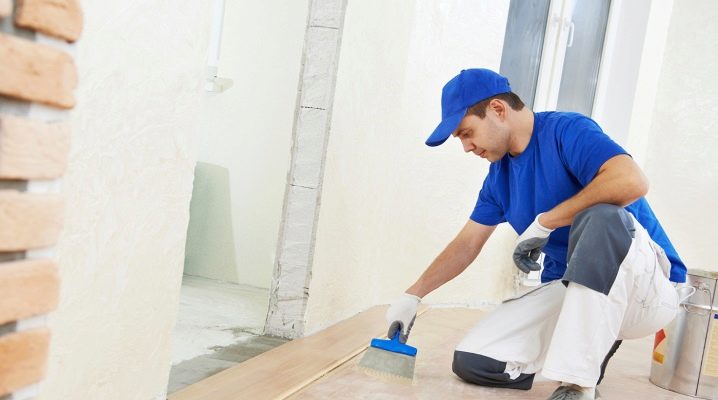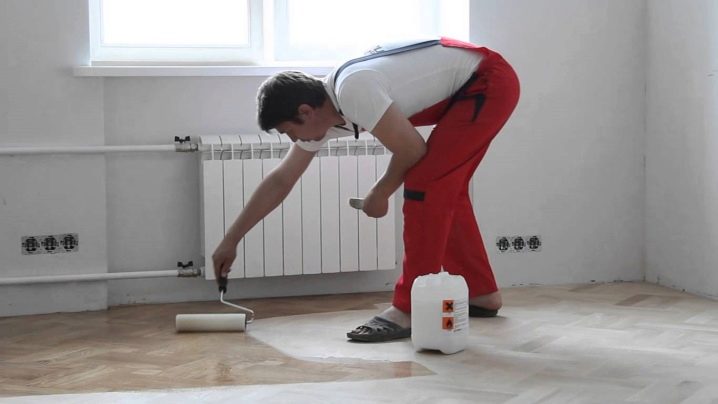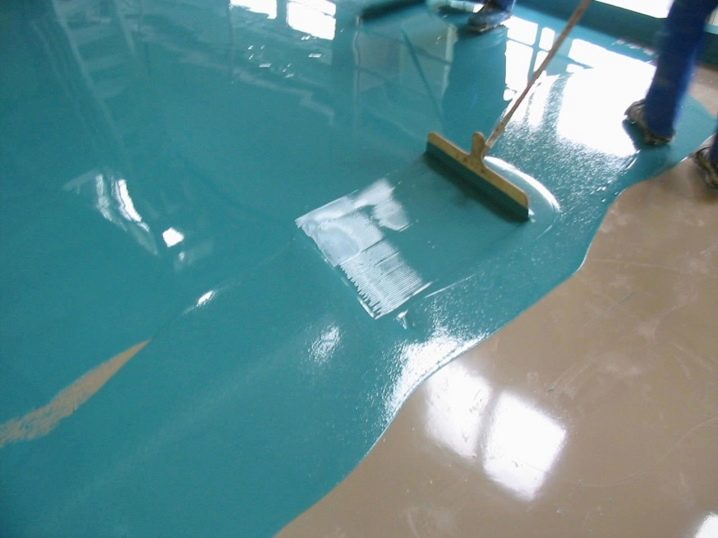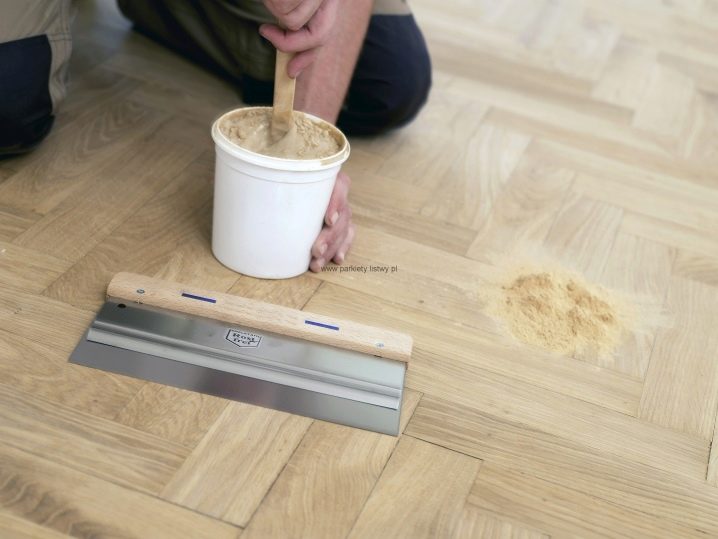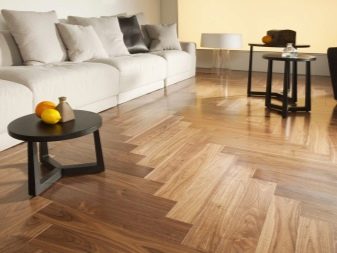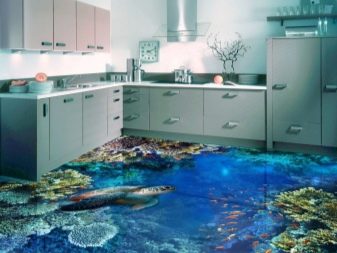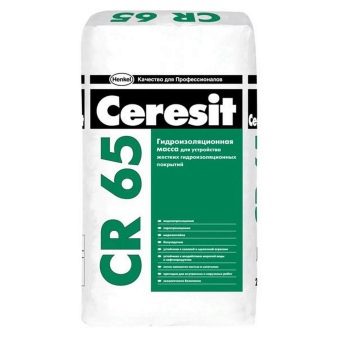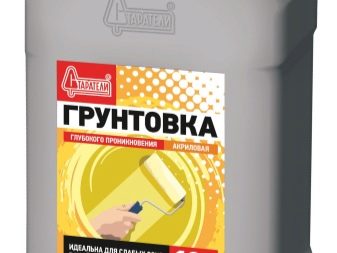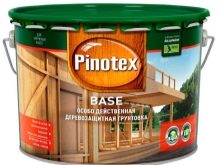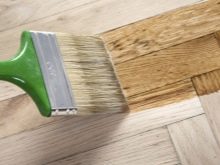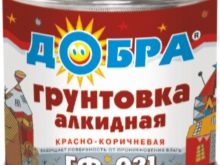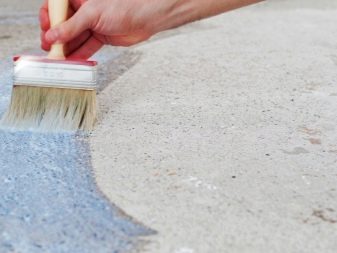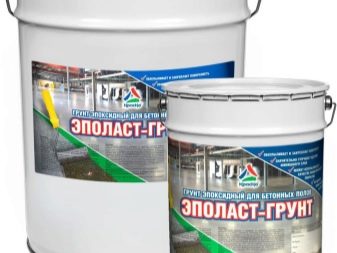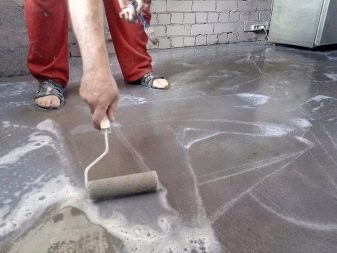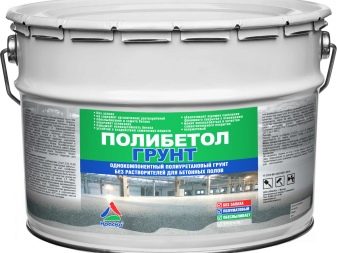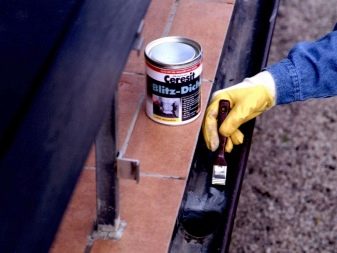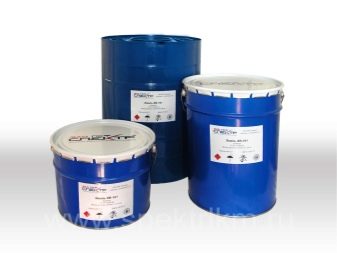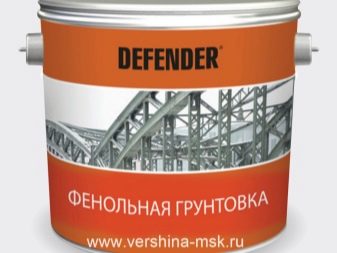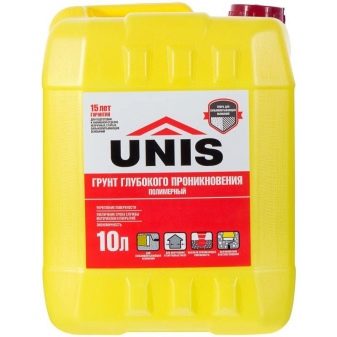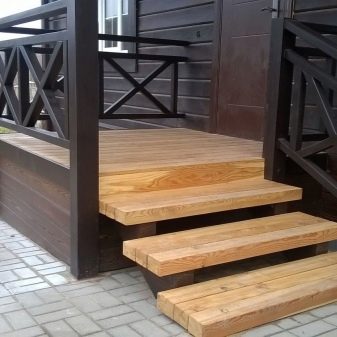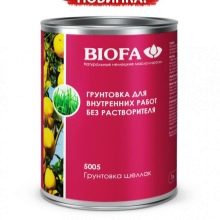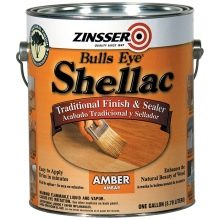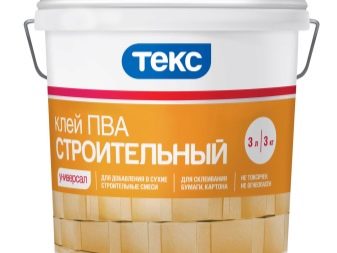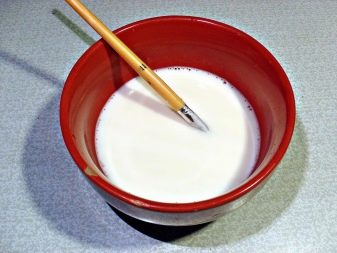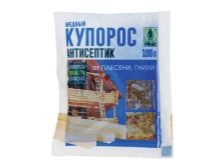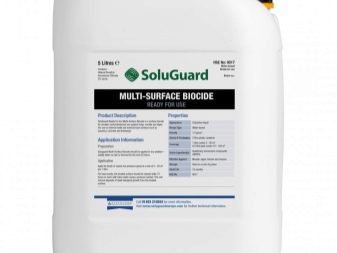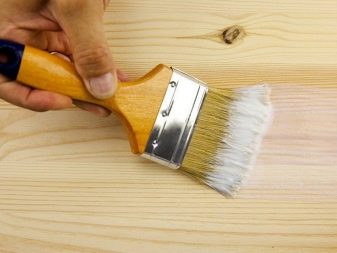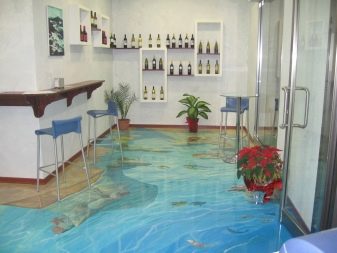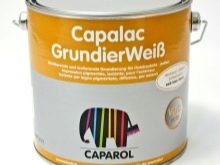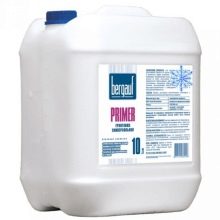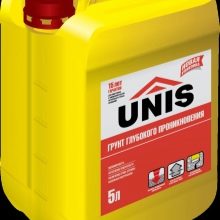Choosing a primer for the floor
Priming of the subfloor is an obligatory and important stage in the formation of the floor covering. Surface preparation for laying decorative material is carried out using primers and can be carried out independently.
Features and benefits
Priming mixtures are easy to dilute and easy to use, and the surface treated with this composition acquires the following valuable properties:
- Increased adhesion. This quality is of great importance in the subsequent installation of self-leveling floors and self-leveling mixtures. The adhesion between the materials becomes very powerful, thereby preventing the detachment of the formed layer;
- Due to the deep penetration of the solution into the rough surface, the particles of the material are associated with the composition, forming a monolithic structure.As a result, the consumption of self-leveling and lacquer coatings is significantly reduced, and the surface begins to repel dust. Air exchange at the same time does not decrease, and water-repellent properties of a draft floor increase;
- The surface becomes more resistant to moderate mechanical damage, and existing microcracks and small flaws are effectively masked;
- The wooden bases after priming become less vulnerable to the effects of external factors. The risk of fungus, mildew, insects and the multiplication of pathogens is reduced. Treated wood gets rid of wood resin and acquires high waterproofing properties.
Do I need to primed?
The role of primer compositions for floor installation is often underestimated. This is due to lack of knowledge in the field of material properties. Concrete in the process of drying evaporates almost all the water, as a result of which voids and cavities are formed inside the concrete layer, which partially weaken the base. Also, the concrete screed has low adhesion. As a result, blistering, peeling and chipping of the upper layer are possible, leading to partial repair, and sometimes to complete dismantling of the self-leveling coating.
Primer should also be used in the initial formation of the subfloor. In this case, slabs are primed. This will make it possible to firmly join the solidifying mixture with the reinforced concrete slab and ensure the formation of a uniform layer. The use of a primer provides a significant increase in adhesion of the subfloor and allows you to create a smooth, durable and smooth surface.
From the quality of adhesion depends on the life of the finish flooring, which can be a self-leveling decorative floor, tile, parquet or porcelain. In cases where the finishing coating is laminate and linoleum, priming is carried out in the event that the decorative coating is planned to be glued to the base.
Kinds
Modern manufacturers represented a huge number of primers for the floor, different in composition, conditions of future operation, purpose and form of release. There are both universal and specialized models, the purchase of which must take into account not only the composition of the mixture, but also what kind of functional load the room will be exposed to.An antibacterial solution should be used in the children's room, a hydrophobic mixture with deep penetration should be chosen in the bathroom and kitchen, and the wooden floor of the attic should be covered with antifungal compound.
In the form of release, the soils are ready to use and concentrated., use without dilution is not recommended. According to the degree of impact of the mixture can be surface and deep penetration. The first are applied on strong bases that do not require additional reinforcement. Such a solution is absorbed into the floor just two millimeters. Deeply penetrating primer is used for impregnation of weakened surfaces that require additional protection. The composition penetrates within 6-10 centimeters and significantly strengthens the base.
The target load of primers is different. On this basis, the compositions are divided into anti-corrosion, antiseptic, antifungal and cold-resistant. There are also soils, giving the treated surface high water-repellent properties. They form on the surface of the base a thin film and reliably protect the subfloor from moisture penetration from above.
By their composition, primers for the floor are of the following types:
- Alkyd This type of primer is designed for treating wooden substrates before painting work. Under the influence of an alkyd mixture, the upper layer of wood changes its structure, as a result of which the adhesion with the next coating becomes very high. The primer protects the wood from the appearance of parasites and mold. Full drying time depends on the softness and porosity of the wood and varies from 10 to 15 hours;
- Acrylic the mixture is universal. It is capable of well strengthening the loose and porous structure of the subfloor, does not exude a sharp unpleasant odor and dries quickly. Full drying time varies from 3 to 5 hours. The mixture is produced in a concentrated form and diluted with water independently. Penetrates deep into the pores and contributes to the formation of a homogeneous structure of the material, which significantly increases the adhesion strength with the following coating. It is used for processing cement screeds, concrete floors, gas silicate blocks, bricks and wood;
- Epoxy. It is used for priming concrete foundations that are exposed to moisture.The primer is chemically resistant and when it is diluted it is necessary to use special solvents. Used to prepare a subfloor before applying self-leveling compounds or painting. Application is allowed on a slightly damp surface. The rough floor treated with epoxy primer acquires high moisture-proof properties, due to which this composition is used to form the floors of swimming pools, bathrooms and kitchens;
- Polyurethane. Designed to prepare the concrete floor for painting. Due to its composition, the soil provides high adhesion of concrete and enamel - when applied, the paint does not absorb and does not spread, and after drying it does not peel off and does not crack;
- Glyphthalic Used for coatings of metal and wood in the preparation of the surface for painting enamel. The basis is alkyd varnish with additives in the form of pigments, stabilizers and desiccant. The disadvantage is a long drying time, which is 24 hours;
- Perchlorvinyl. A universal type of primer used to treat floors of wood, concrete and metal.It contains toxic substances, therefore it cannot be used in residential and public spaces. Full drying time is one hour. The line of the form includes modifications with a pronounced anti-corrosion effect, which are recommended for use on rusty surfaces. Due to the special components, the corrosion processes stop and the metal stops breaking;
- Polyvinyl acetate. Synthetic primer made from latex or polyvinyl acetate dispersion. Used to prepare the floor for the application of polyvinyl acetate dyes. Dyes are added to the primer to form richer finishes. It is applied to processing of the plasterboard, brick and stone bases. When applied forms a film, so the paint consumption is reduced. Dries completely within half an hour;
- Phenolic primer used in the preparation of floors of wood and metal for further painting. It consists of toxic components, so the use of soil in residential buildings is prohibited. The primer is one- and two-component.The time of complete drying of the first one is 8 hours; siccatives are added to the second one, which significantly speeds up this process. Both types form a thin film that is highly thermally stable and provides good waterproofing;
- Polystyrene. Suitable for priming wooden surfaces, it is made from highly toxic solvents, therefore it cannot be used in residential areas. Recommended for use on outdoor verandas, terraces and gazebos. Well suited for processing the porch, slows the process of rotting wood and prevents the appearance of insects;
- Shellac. It is used for priming floors of coniferous wood before applying the stain. Well removes resin stains, so it is recommended for application to the ends and cuts, as well as to cover the knot zones. Full drying occurs 24 hours after use.
In order to save money on repairs, as well as when you need to prime a small area, you can prepare a primer yourself. The easiest way to make a solution of building glue is PVA and water.
For cooking, you need to pour one part of the glue into the container and slowly pour two parts of water into it. Next, you should mix the composition well, add a little crushed gypsum or chalk and mix again. The resulting composition is well suited for self-leveling mixture, laying of porcelain tile, tile and linoleum, as well as for the installation of a self-leveling floor, followed by the installation of "warm". For priming concrete surfaces, cement M400 can be added to the mortar.
You can also make an acrylic solution by yourself. This requires a finely dispersed binder at the rate of 50%, liquid - 45%, copper sulfate - 1%, laundry soap - 1%, antifoam and coalescent are added as needed in an amount of 1.5% of the total mass.
An antifoam agent is added if the binder component starts to foam strongly during dilution, and the coalescent is needed in order to lower the minimum film formation temperature. At a temperature not exceeding 5 degrees, it can not be used. If it is intended to store the solution for seven or more days after its preparation, it is necessary to add a biocide to the composition.Copper sulfate prevents the appearance of fungus and mold, therefore, when processing wooden surfaces, its use is necessary.
How to choose?
The main factor in the selection of the mixture is the type of subfloor, the surface of which is supposed to be primed. For screeds made of concrete, acrylic and epoxy primers are suitable, for wooden substrates, such as solid, chipboard or OSB, acrylic, alkyd, glyptal or polystyrene solutions are a good option. Floors that are planned to be coated with varnish should be treated with transparent compositions, and when preparing the floor for enamel painting, you can use opaque mixtures with the addition of coloring pigments.
Anti-alkaline primers used for the treatment of concrete base with fire-fighting components in the composition. And the impregnation of “concrete contact”, specially created for concrete screeds, will provide a strong adhesion of concrete and flood floors. In the case when it is necessary to further strengthen the rough base, apply a mixture of deep penetration, and for the primer hard coating will be enough to use a surface solution.
You should also check the availability of quality certificates and other supporting documentation. This will reduce the risk of acquiring a fake and will guarantee the quality and safety of products.
Famous manufacturers and reviews
The major manufacturers of floor primers are the following companies:
- Knauf - concern from Germany, well known to the domestic consumer since 1993. The company's products have many positive reviews and are of high quality and environmental friendliness. The most common are the primers “Tifengrunt” and “Betonkontakt”, characterized by deep penetration of the solution;
- Caparol - a popular German manufacturer, producing paintwork and related products in a wide range. Due to reasonable prices and high quality, the demand for primers of this brand is growing steadily;
- Bergauf - a young company that successfully entered the building materials market and immediately took one of the leading positions. Domestic consumer highly appreciates the primer mixture Primer, which is distinguished by its versatility and high environmental friendliness of the solution.The composition can be used at any humidity and temperature, thus forming a smooth and durable surface, completely ready for pouring and laying the floor covering;
- Unis - Russian concern, consisting of a group of companies and producing a wide range of products that meet the highest European standards. Primers of this brand can be used for work in any climatic zone, ensuring the reliability of adhesion with a decorative coating in conditions of aggressive external influences.
For information on how to primer the floor screed, see the following video.
